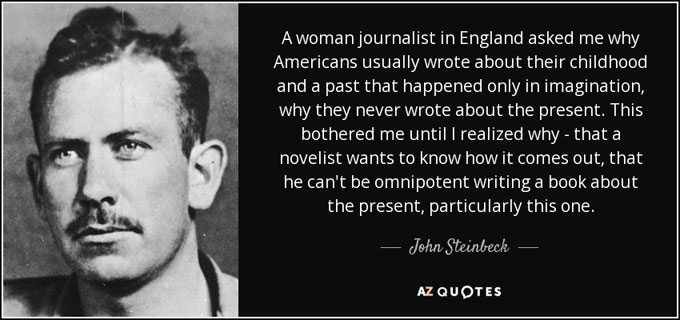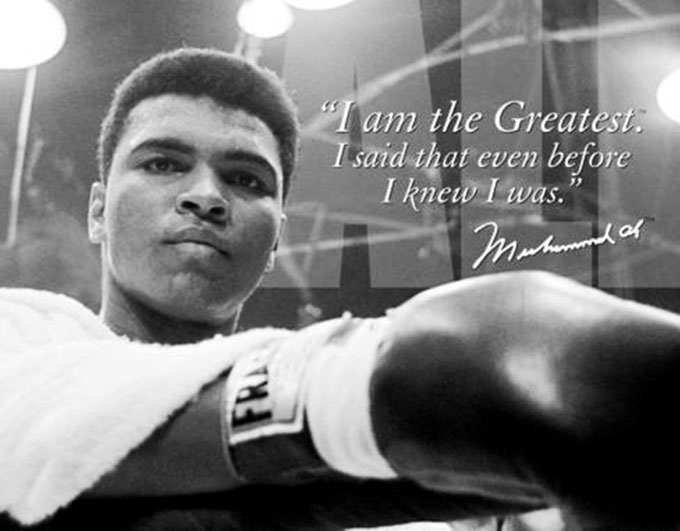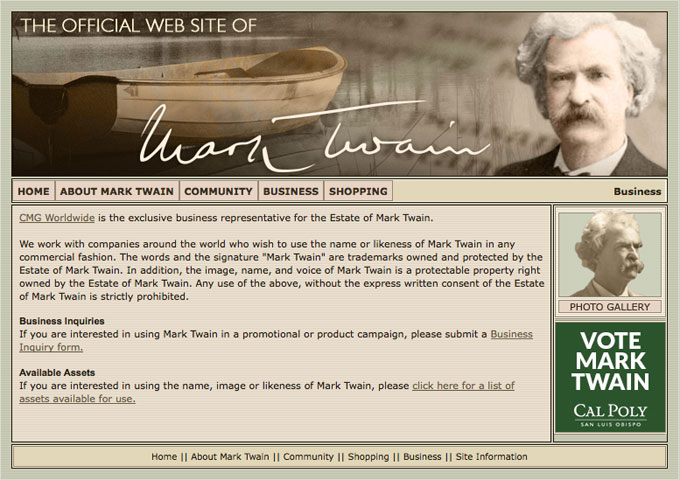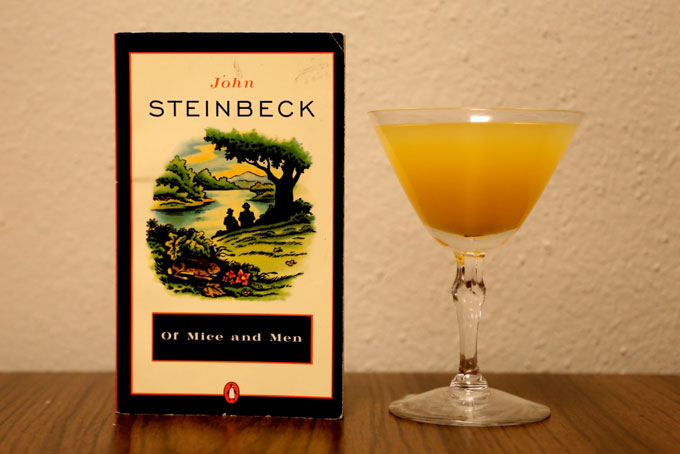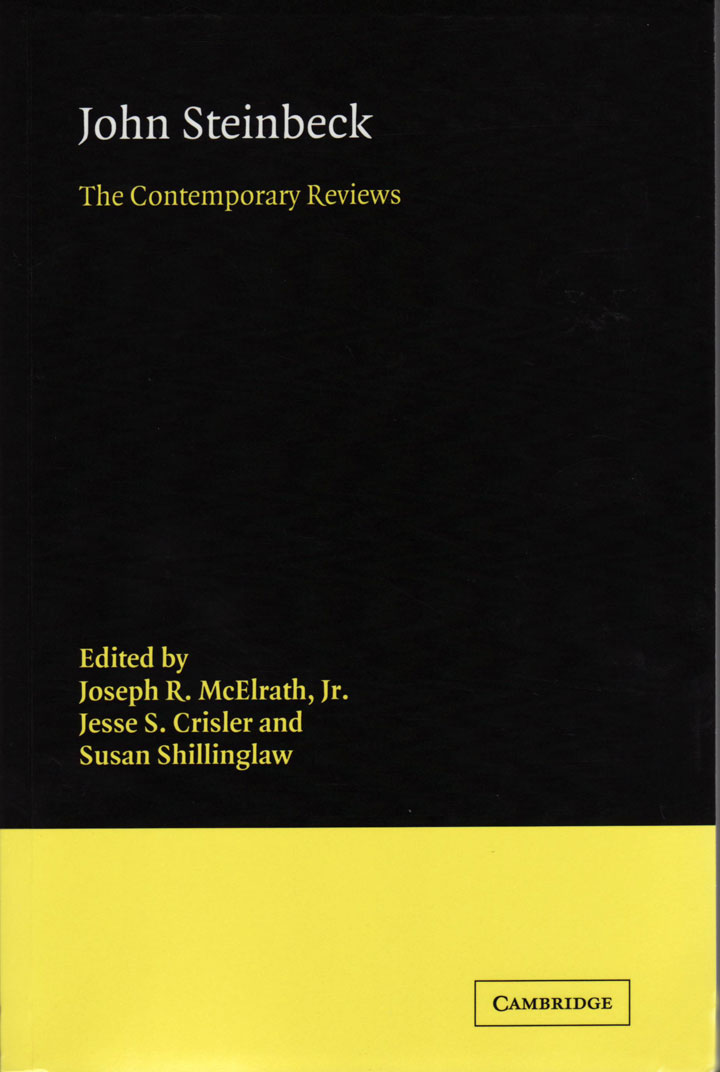Did John Steinbeck discover “fake news” seven decades before President Donald Trump? Based on what he wrote about the mainstream media of his day in A Russian Journal, the author of The Grapes of Wrath came pretty close.
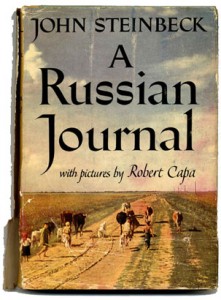 A Russian Journal is Steinbeck’s first-person journalistic account of the trip he took with photographer Robert Capa in 1947 to the war-battered Soviet Union. In Chapter 1, before he sets off for Russia, Steinbeck describes why he and Capa mistrusted the way the news in America was being gathered, edited, and disseminated by the dominant print and electronic media of their day. It has a familiar ring:
A Russian Journal is Steinbeck’s first-person journalistic account of the trip he took with photographer Robert Capa in 1947 to the war-battered Soviet Union. In Chapter 1, before he sets off for Russia, Steinbeck describes why he and Capa mistrusted the way the news in America was being gathered, edited, and disseminated by the dominant print and electronic media of their day. It has a familiar ring:
We were depressed, not so much by the news but by the handling of it. For news is no longer news, at least that part of it which draws the most attention. News has become a matter of punditry. A man sitting at a desk in Washington or New York reads the cables and rearranges them to fit his own mental pattern and his by-line. What we often read as news now is not news at all but the opinion of one of half a dozen pundits as to what that news means.
Steinbeck didn’t call it “fake news.” And he was complaining about bias in the media from a partisan New York liberal Democrat’s point of view. But anyone whose politics are not located in the dead center of the political spectrum today can feel his pain.
Claims of political bias or slanted news coverage from the left and right were nothing new when A Russian Journal was published in 1948, and they’ve been with us ever since. Conservatives have complained about the liberal East Coast media for half a century. In the babble of our Talk Radio/Cable News/Digital Age the mainstream media is criticized 24/7 from a thousand sane and insane places. No faction is happy with the spin of the news. In 2016 a Bernie supporter or a lifelong Nation magazine subscriber was just as likely to be unhappy with CNN’s coverage of the election as a member of the Tea Party.
The Mainstream Media’s Loss was Literature’s Gain
Though the young John Steinbeck was sacked as a New York City newspaper reporter because he couldn’t stop using his literary skills to improve on the facts, he was basically a journalist. A literary journalist. He had a love-hate for the journalism profession and its practitioners. He envied the ability of reporters to parachute into a strange place and quickly come up with the basic facts for a news story. But he also knew from experience that no journalist or writer—no matter how great—ever gets the whole story or captures more than just a glint of what really happened in a bank robbery, a presidential campaign, or a world war. He wrote this in A Russian Journal:
Capa came back with about four thousand negatives, and I with several hundred pages of notes. We have wondered how to set this trip down and, after much discussion, have decided to write it as it happened, day by day, experience by experience, and sight by sight, without departmentalizing. We shall write what we saw and heard. I know that this is contrary to a large part of modern journalism, but for that very reason it might be a relief. . . . This is just what happened to us. It is not the Russian story, but simply a Russian story.
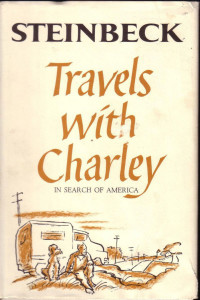 Steinbeck’s journalism was super-subjective–sometimes to a fault. Russian Journal was his story about the backward, unfree, monstrous USSR he glimpsed in 1947, just as Travels with Charley was his subjective story about the 1960 America he saw on his iconic 10,000-mile road trip. Both books started out as works of nonfiction–as ambitious acts of serious, albeit personal, journalism. In Charley the many fictions Steinbeck slipped into his story about America overwhelmed the “true” facts, and after 50 years its publishers had to admit that it was so fictionalized Charley could not be considered a credible account of how he traveled or whom he really met.
Steinbeck’s journalism was super-subjective–sometimes to a fault. Russian Journal was his story about the backward, unfree, monstrous USSR he glimpsed in 1947, just as Travels with Charley was his subjective story about the 1960 America he saw on his iconic 10,000-mile road trip. Both books started out as works of nonfiction–as ambitious acts of serious, albeit personal, journalism. In Charley the many fictions Steinbeck slipped into his story about America overwhelmed the “true” facts, and after 50 years its publishers had to admit that it was so fictionalized Charley could not be considered a credible account of how he traveled or whom he really met.
A Russian Journal has suffered no such loss of credibility. It’s a great work of subjective journalism—a rare glimpse into a dark and alien world by a keen observer. Anyone teaching college students how to report and write in a precise, interesting, and powerful way would be smart to have them study how well Steinbeck did it—his way, and under trying circumstances .

